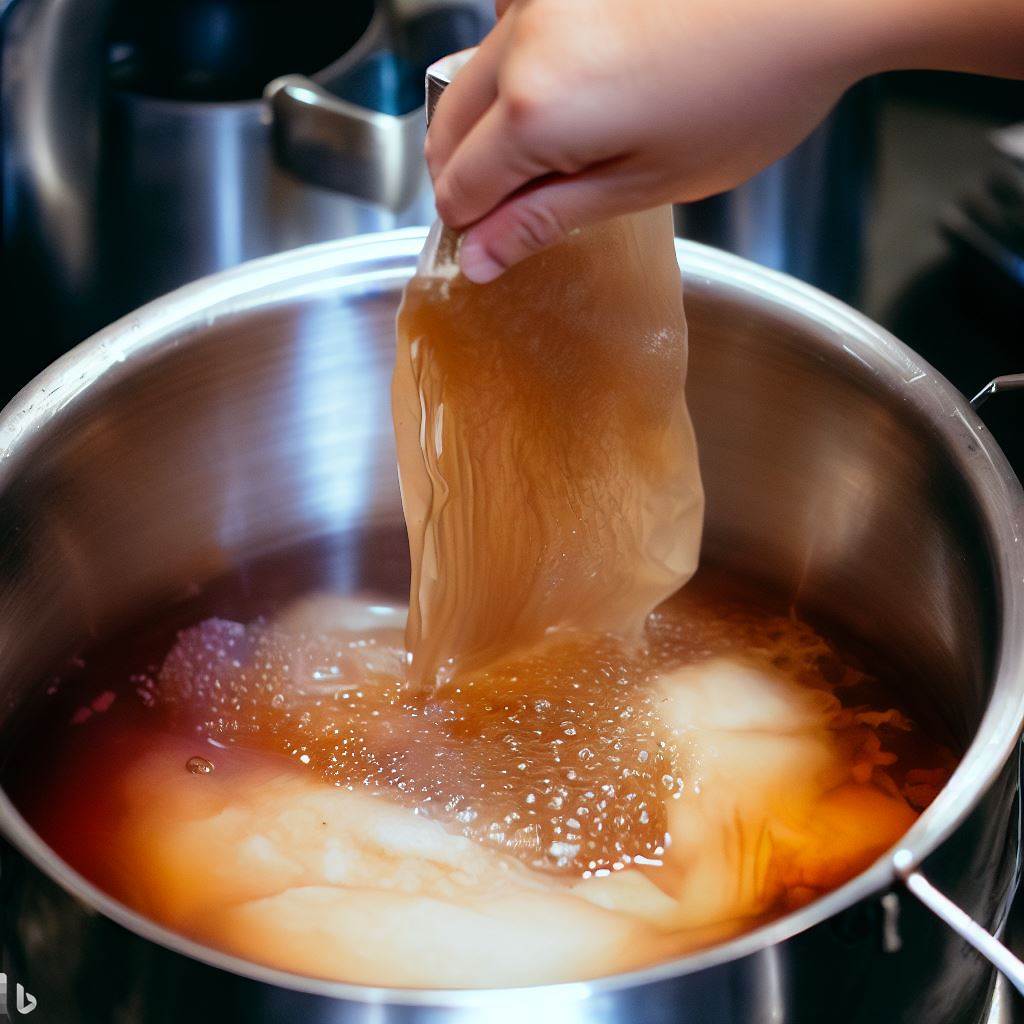As a passionate kombucha brewer, you’ve likely come across the term “SCOBY” numerous times. Short for Symbiotic Culture Of Bacteria and Yeast, a SCOBY is a vital ingredient in brewing that tangy, effervescent kombucha we all love. However, you may notice over time that your SCOBY has grown significantly thicker. That’s when you need to trim it. But how do you go about it? This detailed guide will walk you through the process of how to trim your SCOBY for a perfect kombucha brew.
How to Trim Your SCOBY When Brewing Kombucha: A Detailed Guide
Before we dive into the trimming process, it’s essential to understand what a SCOBY is and how it grows. Essentially, a SCOBY is a living, cellulose-based culture responsible for turning sweetened tea into a fermented, probiotic-rich kombucha drink.
Each time you brew a batch of kombucha, your SCOBY forms a new layer or “baby” SCOBY on top of the “mother” SCOBY. Over several brews, these layers accumulate, causing the SCOBY to thicken. While a robust, thick SCOBY is a sign of a healthy fermentation process, there comes a point when it can get too large and interfere with your brewing process.
When to Trim Your SCOBY
Recognizing when your SCOBY needs a trim is crucial to maintaining a balanced kombucha brew. Here are a few signs that it might be time to trim your SCOBY:
- Thickness: If your SCOBY is more than an inch thick, it’s likely time for a trim. An overly thick SCOBY can speed up the fermentation process, leading to overly acidic kombucha.
- Space: If the SCOBY is taking up too much space in your brewing jar, leaving little room for the tea, it needs to be trimmed.
- Health: If you notice mold or any irregularities on your SCOBY, such as strange colors or smells, you may need to trim off the affected parts. Although it is safest just to discard this type of SCOBY!
How to Trim Your SCOBY: A Step-by-Step Guide
Now that we’ve covered the basics, let’s get to the main event: trimming your SCOBY. Follow these simple steps to maintain a healthy and effective SCOBY:
Step 1: Sanitize Your Equipment and Hands
Before you begin, make sure your hands and the scissors or knife you’ll use to trim the SCOBY are clean and sanitized. This will prevent any harmful bacteria from contaminating your SCOBY.
Step 2: Remove the SCOBY from Your Brewing Vessel
Next, carefully lift your SCOBY out of your brewing vessel. It’s a good idea to do this over a clean surface or sink to avoid any spillages.
Step 3: Trim the SCOBY
Using your sanitized scissors or knife, trim off the older, darker bottom layers of the SCOBY until you’re left with a thickness of about half an inch. This should be enough to effectively ferment your next batch of kombucha.
Step 4: Return the Trimmed SCOBY to Your Brewing Vessel
After trimming, place your SCOBY back in the brewing vessel, ready to start fermenting your next batch of kombucha.

Don’t Discard the Trimmed SCOBY Layers
Now you’ve successfully trimmed your SCOBY, you might be wondering what to do with the trimmed off layers. Far from waste, these layers can still serve several purposes:
- Start a SCOBY Hotel: A SCOBY hotel is a separate jar where you store extra SCOBYs in some sweet tea. This is useful as a backup in case your main SCOBY gets contaminated.
- Share With Friends: Encourage your friends to dive into the world of homebrewed kombucha by gifting them a layer of your SCOBY. It’s a unique and thoughtful gift that can help someone kickstart their kombucha brewing journey.
- Compost It: If you’re into gardening, your SCOBY trimmings can become a fantastic addition to your compost pile. Being rich in nutrients, SCOBY can help enrich your soil, giving your plants a healthy boost.
- Use in Recipes: It might surprise you, but SCOBY can be used in various culinary creations. From smoothies and salad dressings to candies and dog treats, there are numerous SCOBY recipes available online that you can try out.
Taking Care of Your Trimmed SCOBY
After trimming, your SCOBY will continue to grow and ferment your kombucha. To ensure its health and longevity, remember to:
Feed It Regularly: A SCOBY feeds on the sugar in your tea, so regular feedings are necessary to keep it healthy. Brew a new batch of sweet tea for your SCOBY every one to two weeks.
Keep It Warm: SCOBY performs best in a warm environment. Try to keep your brew in a location where the temperature is consistently between 70-85 degrees Fahrenheit[^12^].
Monitor It Closely: Regularly check on your SCOBY to ensure it’s healthy. If you notice any mold, strange smells, or abnormal colors, it might be time to discard that SCOBY and use a backup from your SCOBY hotel.
By taking the time to trim your SCOBY and care for it properly, you can ensure that your home-brewed kombucha is always of the highest quality. Remember, a healthy SCOBY leads to a delicious, nutrient-rich kombucha that you can enjoy and share with your friends and family. Happy brewing!
Final Thoughts
Finally, SCOBY trimming is not just about maintaining the size of this kombucha-producing powerhouse. It’s also about ensuring the health and balance of your fermentation process. A well-trimmed and cared-for SCOBY results in high-quality, tasty kombucha brew. And with the extra SCOBY layers, you have the chance to expand your kombucha brewing circle, enhance your garden’s compost, or explore new culinary frontiers.
Remember, SCOBY trimming isn’t a chore; it’s an integral part of the fascinating journey of home brewing kombucha. So, embrace it, enjoy it, and sip on your delicious, home-made kombucha with the satisfaction of knowing you’ve mastered another essential brewing skill.
Happy SCOBY trimming and kombucha brewing y’all!
Thanks for reading this GMK article on How to Trim your SCOBY. Read more here:







